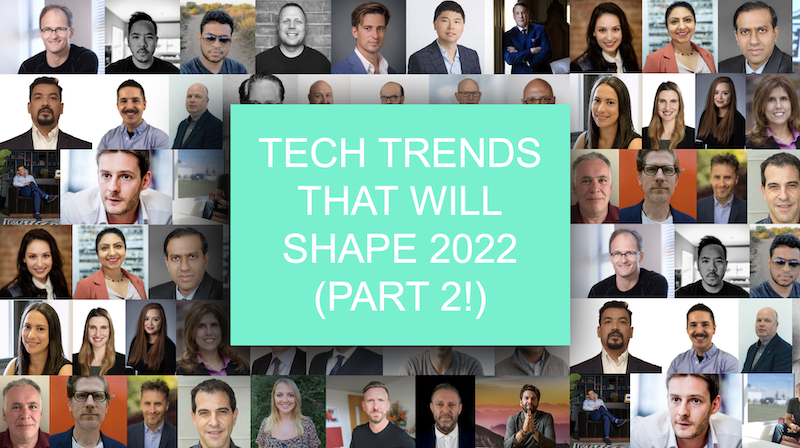- Explore part 2 of our tech trends predictions for 2022.
- COVID-19 has had an enormous impact on the industry throughout the past year, which trends from 2021 will thrive in 2022?
- Here, we explore predictions from industry experts, including Ziflow CEO Anthony Welgemoed, founder of Aisera Muddu Sudhakar and more.
While looking ahead in 2022, we’ve collected industry expert predictions on what tech trends will shape the year.
Explore part 2 of our impressive panel of experts, giving their predictions on what trends in tech they believe will define this year and beyond…
Explore part 1 on predictions for tech trends that will shape 2022 here.
Our Panel of Experts:
- Kenzo Fong – Founder and CEO of Rock
- Pieter de Villiers – CEO & Co-Founder of Clickatell
- Kosala Hemachandra – Founder/CEO of MEW (MyEtherWallet)
- Colin Pape – Founder of Presearch
- Vasco Pedro – Co-Founder, and CEO of Unbabel
- Matt Zhang – Founder and Managing Partner at Hivemind (Algorand Partner)
- Kevin Goodwin – Founder and CEO of EchoNous
- Amit Venugopal – Chief Information Officer at Sovos
- Alex Hripak – VP of Technology at Credly
- Marcus Ollenbuttel – Senior Vice President, Digital Distribution, intY
- Paul Speciale – CPO of Scality
- Carlos Anchia – CEO of Plainsight
- Rahul Bhageeradhan – Global Director, Digital Architecture, Kissflow
- Kyle Tuberson – CTO, Public Sector at ICF
- Randy Kern – CTO at Marqeta
- Jeff Ransdell – Fuel Venture Capital
- Barnabas Birmacher – CEO and Founder at Bitrise
- Yvan Boisjoli – CEO and Co-Founder of Bold Commerce
- Ran Korber – CEO and Founder of BreezoMeter
- Jason Beres – SVP of Developer Tools at Infragistics
- Rob Holland – CEO of Feedback Loop
- Sherene Hilal – Chief Product Officer at Bluecore
- Sukhi Jutla – Co-Founder & COO at MarketOrders
- Muddu Sudhakar – Founder and CEO of Aisera
- Daniel Cecalacean – Senior Manager of Product & Strategy at Opengear
- Jaime Bosch – CEO of Voicemod
- Harald Remmert – CTO for Cellular Solutions at Digi
- Vinay Nair – Founder and CEO of TIFIN
- Nabila Salem – President of Revolent Group
- Anya Boutov – Chief Revenue Officer for Beacon Platform
- Isabella Schmitt – Director of Regulatory Affairs at Proxima Clinical Research
- Maria Palombini – IEEE SA Healthcare and Life Sciences Practice Lead
- Dr. Hermann Brand – IEEE SA Mobility Practice Lead
- Purva Rajkotia – Director, IEEE SA Global Business Strategic Initiatives (GBSI) and Connectivity and Telecom Practice Lead
- Anthony Welgemoed – CEO of Ziflow
- Andrew Yu – ModoLabs
- David Hennell – Business Development Director of National Broadband
- Simon Smith Wright – CEO and Founder of Push Live
- Dr Alex Connock – Head of the Creative Business MA at the National Film & Television School
- Ronny Golan – CEO and Co-Founder of ViewersLogic
- Suzy Ley – EMEA Marketing Lead at Zefr
- Paul Carreo – Director of EMEA Growth at VidMob
- Phil Acton – Country Manager, UK and BeNeFrance at Adform
- Gary Styles – Founder and CEO of Zellar
For any questions, comments or features, please contact us directly.

Kenzo Fong, Founder and CEO of Rock

“Instead of products that try to replace the “office” like the Metaverse, or always on audio and video, there will be a move towards a better and different way of working that’s asynchronous by default. It is multimodal, so employees can pick and choose how to best communicate across time zones, not confined by the 9-5 workday, and brings together all the other work tools you already have. This will lead to less Zoom meetings, more productive work time, and a better work-life balance.”
Pieter de Villiers, CEO & Co-Founder of Clickatell

“The pandemic has accelerated digital transformation efforts and forced people of all ages to embrace eCommerce, which has resulted in a multi-billion dollar Chat Commerce market opportunity.”
“According to a recent report, 79% of respondents use chat apps daily, 89% of millennials want to do business through a chat app and 93% think there are benefits to communicating with a business via chat app. Consumers live in chat apps and brands will move beyond desktop, mobile websites, branded apps, and email, by leveraging business messaging/chat as the channel of choice to engage with customers for support, engagement, and payments.”
“Chat Commerce is the third wave of digital commerce, following on from eCommerce and app commerce. More than 7.7 billion people use some form of chat several times a day, making chat the largest digital engagement channel in the world.”
“Brands will be aiming to provide the personalised shopping experience consumers are expecting digitally and select technologies that can help scale their chat/CX operations, provide the ability to communicate 1:1 with customers, and share relevant goods and services picked out just for the consumer in a time-efficient manner. Chat Commerce is the best way to do this and gives retailers a way to easily connect with their customers in a meaningful, real-time and relevant manner while allowing the customer to make transactions via a chat app.”
“With COVID-19 accelerating digital commerce adoption and businesses fast-tracking their digital transformation to meet consumers where they are, we can expect an increased demand for and deployment of Chat Commerce services and experiences.”
For any questions, comments or features, please contact us directly.

Kosala Hemachandra, Founder/CEO of MEW (MyEtherWallet)

“In 2022 I’m looking forward to physical items such as car titles and house deeds becoming NFTs. This will introduce a whole new game to crypto. NFTs are easy to understand, similar to collectibles in the real world NFTs can easily be explained as collectibles in the digital world, but the next evolution lends itself to so many new industries that have never touched crypto before. Every wave of NFTs bring something new to the table, which means we haven’t even seen the full glory of NFTs yet.”
Colin Pape, Founder of Presearch

“In 2022, I see more savvy consumers doing their homework on how companies collect their data and how they can better protect their privacy. Just ten years ago, you didn’t see nearly as much concern for data collection and privacy rights. Now we’re witnessing a major shift as people gain a deeper understanding of how companies operate and use their data against them- making privacy a priority has become a major business advantage.”
“When we spend much of our lives in the digital realm, the threats of compromised data and being closely tracked become more acute. A metaverse of user-controlled platforms could present us with the opportunity to put users in control of their digital lives–privacy included. But it will be on users to decide if they want to make the metaverse a place of privacy or a place of continued overreach.”
For any questions, comments or features, please contact us directly.

Vasco Pedro, Co-Founder, and CEO of Unbabel

“As the world adapts to the growing potential of the metaverse, brands are presented with an opportunity to connect with people regardless of location or language. This means more businesses will look for ways to be truly global, borderless, and open to new customers from anywhere.”
“At the same time, we know that 68% percent of consumers will switch to a brand that can communicate with them in their native language. With a potential market of 800 billion, the virtual world, the metaverse is a huge opportunity and businesses will need AI and language to power their borderless communication.”
Matt Zhang, Founder and Managing Partner at Hivemind (Algorand Partner)

“In 2022, we will see more companies explore alternative governance models using DAO and blockchain technology. This trend will be particularly obvious in the consumer tech sector, where consumers’ feedback on products shapes the longevity of the companies that provide those services in the first place.”
For any questions, comments or features, please contact us directly.

Kevin Goodwin, Founder and CEO of EchoNous

“The pandemic has driven a huge boost in health tech – especially in innovations that combine AI and imaging, where there was a lot of buzz and infusion of cash in 2021. Despite this huge financial influx, practitioners and technologists see AI providing value in diagnostics *only* when the image quality is high enough for AI to make trustworthy measurements. That’s where the focus will be in 2022.”
“New AI developers like Us2.ai, for example, are integrating exclusively with our Kosmos device and platform, which is powerful enough to get the highest resolution scans – necessary for AI to be effective. Fuelled by the pandemic in 2020 and 2021, the imaging field widened as the demand for portable scanning grew. In 2022, we’re going to see the best of these technologies move to the front of the market because of meaningful AI. The result will be better patient care integration in 2022 and over the next few years.”
Amit Venugopal, Chief Information Officer at Sovos

Data: “With new government-mandated e-invoicing laws rapidly expanding across the globe, the government is now your data partner. In 2022, it’s unavoidable – governments are now firmly entrenched in enterprise data stacks touching everything from invoices to payroll to shipping. As a result, a company’s failure to provide governments with the correct data access and accurate reporting has the potential to bring your business to a halt. Real-time enforcement is here and whether or not to comply is not a choice if you want to continue operating in that country. As a result, organisations need a single compliance broker that matches business and government innovation rates with a solution that is connected, continuous and complete.”
Cloud Automation: “Global RPA software revenue is projected to reach $1.89 billion in 2021, an increase of 19.5% from 2020. Recognising the benefits associated with RPA, tax & accounting departments are looking for their fair share to help manage the increasing demands of global tax authorities. When you consider the labor-intensive, repetitive tasks tax departments often complete – for instance, gathering/validating data, running reports and calculating adjustments – accountants are now seeing the potential for RPA to transform the way tax departments operate and in some ways reshape what it means to be a tax professional. By leveraging RPA in 2022, tax departments will begin to replicate routine, predictable tasks and free up professionals to focus on more high-value work.”
For any questions, comments or features, please contact us directly.

Alex Hripak, VP of Technology at Credly

HR technology will advance work-life balance: “Many employees come from a culture where taking time off is taboo, even when a key to retention is good mental health. At scale, work-life balance can easily be lost in the shuffle of daily work. In 2022, technology will need to do a combination of gathering insight from employees and using AI against existing signals to glean when people should take time off. We’ve already seen advancements in scheduling software like Google Calendar implementing office hours and offering users insight into how their time is utilised. We’ll likely see more features developed over the next year to help workers be more efficient with their workday and expand opportunities for more personal time with the goal of finding that balance between productivity and burn-out.”
Marcus Ollenbuttel, Senior Vice President, Digital Distribution, intY

“Digital transformation will continue into 2022 as companies further mature how they use solutions to enable their business to be more efficient and profitable, while serving their customers effectively. Many solutions were rushed into place in 2020 when the pandemic hit, and now people are refining how they are used for the greater good.”
“As no one solution works for every person or company, the place of ISV’s or marketplace vendors will become more important to build solutions that are comprised of many different parts.”
“There are signs that the agency model of selling is picking up within the MSP space as people become true technology partners for their customers, handling more than what they can bill directly. This is an exciting evolution for the UCAAS, CCAAS and communication vendors.”
“Cloud Computing is another big driver for 2022, as remote and hybrid working is the way forward in the near future. The need for IT solutions which can be accessed easily and securely from anywhere will need to continue.”
For any questions, comments or features, please contact us directly.

Paul Speciale, CPO of Scality

“AI/MLOPS will become a standard part of enterprise and midrange storage products, enabling more robust operations, reducing staffing cost and improving service.”
“For several years, the data storage industry has recognised a need for increased automation in storage systems management. This need is amplified by data growth, and by predicted shortages in skilled human resources needed to manage these mountains of data. IDC has published reports for “the Future of Work” that provide ominous predictions that a lack of IT skills will affect over 90% of enterprises and will cost them over $6.5 Trillion by 2025. Previous reports have predicted that storage administrators will have to manage 50 times more data in the next decade, but with only a 1.5X increase in the number of skilled personnel.”
“The integration of AI/MLOps into large-scale data storage offerings will increasingly emerge to help administrators offload and automate processes – and to find and reduce waste and increase overall storage management efficiency. MLOps can monitor and provide predictive analytics on common manual tasks such as capacity utilisation, pending component failures and storage inefficiencies. These innovations wouldn’t be possible without the application of ML techniques, and their ability to consume and “train” from extremely granular system logs and event data during real-time operations.”
Carlos Anchia, CEO of Plainsight

Vision AI is the clear-eyed companion for 2022: “As we conclude 2021, the arrival of Omicron suggests that an evolving version of the pandemic is an ongoing reality. As it has been said many times, many ways, this is the new normal. Over these last two years, the adoption of computer vision has accelerated, in part, because of its ability to take on pandemic-related challenges such as monitoring social distancing in public places and ensuring COVID-related cleaning and PPE compliance. Enterprises are also deploying vision AI models to automate and improve analysis of video-driven business processes like defect detection in manufacturing, traceability in supply chains, livestock management in agriculture, task optimisation in warehouses, automation in restaurant drive-thrus, and shopper personalisation in retail.”
“Humans will continue to be the intelligence behind a lot of this work, but we will enhance human capabilities with the accuracy of machines with machine learning for work that is prone to human error. Businesses will choose to run operations leveraging cameras to optimise employee placement and assignments to mitigate exposure to physical or mental risks. For example, vision AI confirms and helps enforce masking compliance at the entrances of buildings. It can also detect and alert to workplace hazards to protect workers and reduce workplace injury.”
For any questions, comments or features, please contact us directly.

Rahul Bhageeradhan, Global Director, Digital Architecture, Kissflow

“The year 2021 marked the beginning of the Low-code era with enterprises choosing the quickest way to develop apps due to a shortage of talented developers. This triggered massive demand for platform products that support rapid application development. In 2022, this is expected to pick significant momentum with low code technology being the first choice for tech leaders to build and release applications at scale.”
“Hybrid & remote work becoming a norm, IT is burdened with the constant & changing demands of the business. The invariably dynamic nature of processes demands continuous optimisation and turns out to be a bottleneck for business, especially if IT can’t deliver applications on time. To make this whole approach scalable, low-code platforms provide multiple environments for the business team and DevOps team to test, build, deploy and modify applications collaboratively. This fundamental shift to a problem-solving approach would be the guiding principle for low-code strategy going forward.”
Kyle Tuberson, CTO, Public Sector at ICF

“COVID has taught us that resilience and adaptability are now more important than ever. For digital leaders, this means assembling capabilities and operating models that enable a quick reconfiguration of the business in response to VUCA—volatility, uncertainty, complexity and ambiguity. To meet the growing complexity of the world, organisations will focus on low-code platforms and product management centricity to enable adaptability.”
“Low-Code / No-Code Platforms: Low-code / no-code technologies and platforms enable a quick reconfiguration of business capabilities. More importantly, these platforms offer individuals with little to no programming experience or knowledge the opportunity to build, deploy and customise applications. These systems offer accessible, user-friendly solutions to address the widening talent gap and limited inventory of software developers. It’s becoming an increasingly popular choice that allows current software developers to use their time for more advanced, complex projects.”
“Product Management Centricity: In 1997, Steve Jobs said it best: “I’ve learned the hard way, that you have to start from your desired customer experiences and work backwards into the technology.” Now, looking ahead to 2022, this thinking can also apply to companies managing digital practices – work from the outside in with a relentless focus on customer outcomes. Focusing on customer outcomes enables digital leaders to optimise for value over process. In the end, what customers value is what’s most important.”
For any questions, comments or features, please contact us directly.

Randy Kern, CTO at Marqeta

“I believe we’re going to see AI and machine learning play a larger role in fintech, and help embedded finance tools become smarter and provide more value to consumers.”
“Card issuers like Marqeta typically see a larger part of the payments ecosystem than merchant acquirers, giving us a significant opportunity to use data to improve consumer experience, for instance helping our customers make proactive recommendations to help their cardholders save money, or protect them from fraud. I think we’ll see payments become an even bigger part of how brands engage with their customers, with new incentives and rewards that can be customised based on data.”
“By leveraging AI, companies can be more agile and offer different incentives based on consumer behaviour. Companies that really nail the customer experience with payments, while protecting them from bad actors, will stand apart from the competition.”
Jeff Ransdell, Fuel Venture Capital

1. NFTs: “More of the population will familiarise themselves with NFTs, and I think we will begin to see a lot more big companies utilise NFTs to incentivise customers to use a product or platform more by rewarding them with giveaways (which will also act as a marketing technique). We will probably see more subscription/membership models utilising NFTs to provide exclusive access or first looks at new products being released or acting as tickets to events and meetups (leverage NFTs for VIP access to specific things or giveaways). These NFTs will also be huge in the AR/VR space – with NFTs providing actual utility in the metaverse.”
2. Space: “The end of 2021 saw the race to space explode with private companies reaching new heights, literally. 2022 will see that trend continue, not just for space tourism but with all different forms of technology from science to satellites and defence. The last couple of months of 2021 saw more movement in space than the last several years combined. We are only at the beginning.”
3. Cybersecurity: “As everything continues to go digital, it’s probably safe to assume cybercrime will continue to rise and new cybersecurity innovations/companies will emerge. I can see “Buy now, pay later” companies being targeted more aggressively. With BNPL emerging and taking off in 2021 and being such a large and nascent sector, it is inevitable that there are loopholes that need to be worked out so that the lax application process isn’t leaving vendors and consumers paying the price for fraud.”
4. Emerging Markets: “There will be continued growth of new tech companies emerging in LatAm and especially Africa as tech talent is discovered in areas with really low labor costs. VC funding to these areas will follow. Being based in Miami, Fuel Venture Capital has long bet on LaTam and those bets are coming to fruition.”
For any questions, comments or features, please contact us directly.

Barnabas Birmacher, CEO and Founder at Bitrise

1. Super apps will appear in the West: “Achieving success in the App Stores has become increasingly limited to a handful of apps that dominate their categories. In ‘22 this trend will accelerate and we’ll see its logical continuation when the most successful mobile businesses compete for leadership positions not only in their categories, but across multiple categories.”
“This will happen in two different ways. Some companies will take the ‘build it’ route like Uber has, and continue offering more and more functionality to their users. Others will pursue the types of massive acquisitions and mergers that were responsible for transforming Pinterest into a massive shopping app and enabling Deliveroo to offer mobile payments.”
“This is already happening in APAC with apps like Grab, LINE, Gojek, and their peers emerging. The West is next.”
2. Alternative app stores will begin to overshadow giants like Apple and Google: “U.S. developers have long explored expanding beyond western app markets to break into the untapped Chinese mobile market. But unlike in western app stores, Apple and Google–who have relatively small presences in China (only 8 – 13%)–aren’t what stands between app creators and the users of nearly a billion devices.”
“In China, app stores created by device manufacturers such as Huawei, Vivo, Xiaomi, and Oppo, are critical to reaching these users. This year we saw companies like Huawei introduce accessible ways for western companies and developers to crack open China and its audience of 2 billion users.”
“In 2022, we will see these alternative app stores grow in popularity among western companies as these companies make it easier for the world’s best app creators to get their content into the hands of their users. With Chinese users accounting for around 40% of global app spendings, mobile organisations will rely on these app stores to grow their global market share.”
Yvan Boisjoli, CEO and Co-Founder of Bold Commerce

No channel is off limits–technology will make every digital touchpoint shoppable: “Consumers want to shop wherever and whenever they see something they want, even if there’s no store in sight. Their desire to buy is outpacing brands’ ability to give them shoppable opportunities outside of traditional shopping channels.”
“This will change in 2022, as retailers begin adopting technology that enables checkout to take place in any digital or physical channel and meet shoppers where they are most engaged.”
“By going headless, brands will effectively free themselves from the confines of ecommerce sites. In doing so, we’ll see brands introducing digital customised clothing shopping on channels that weren’t originally designed to cater to completing a purchase, such as packaging, fitness equipment, or car dashboards.”
For any questions, comments or features, please contact us directly.

Ran Korber, CEO and Founder of BreezoMeter

1. Technology companies will have to ditch the symbolic ‘climate-conscious’ gestures: “Consumers had first-hand exposure to the real-life impacts of climate change this year with record-breaking wildfires and the worst air pollution the U.S has ever seen. Now that they’re acutely aware that this is directly affecting them, they will no longer be amused by far-off climate initiatives from tech companies with symbolic names like “Vision 2030”.”
“In 2022, we’ll see this heightened consumer awareness create pressure on tech companies to take immediate actions, not only to limit their own direct impact on climate but to build products that protect consumers’ health.”
2. Everyday tech devices will protect consumers from climate change: “With climate change constantly in the news and the UN’s “Code Red for Humanity” stressing that it will only get worse in coming years, consumers are becoming acutely aware of their exposure to environmental hazards like air pollution, wildfire smoke, UV rays and pollen. Yet, they have had little control over how these changing climate conditions affect their personal health.”
“Rather than waiting for governments to make wide-sweeping changes to protect consumers, tech companies are looking to environmental data to understand how shifting climate conditions affect their consumers’ and users’ wellness.”
“In 2022, we’ll see companies put environmental protections directly into the hands of consumers through the products and devices they use everyday (e.g., mobile apps, smart home IoT devices, cars and other connected experiences). For instance, Volvo now monitors air quality not only within its car cabins but also the air quality directly outside vehicles, so that drivers can make informed and real-time driving decisions that reduce their exposure to air pollution and minimise related adverse health effects.”
“These types of efforts will quickly go from novel to the norm, with daily air quality updates just as important as daily weather updates.”
Jason Beres, SVP of Developer Tools at Infragistics

No-code/low-code tools will give birth to businesses that couldn’t have otherwise existed: “For the majority of people that lack the ability to write code or lack access to a team of designers and coders, being able to create a mobile or web app can seem far out of reach.”
“The rise of low-code and no-code tools over the past year is now enabling entrepreneurs and everyday non-coders to bypass having to learn how to code a product into existence. As a result, emerging entrepreneurs can directly innovate on an idea and create any digital business they can dream up–from a fashion or food delivery app to a new dating application.”
“We’ll see new applications emerge that identify needs in the market that would-be entrepreneurs have known about for years, but have been held back because they couldn’t move their idea to a full application. While these new businesses may need to hire a team of designers and developers as they grow, the use of low-code and no-code tools will enable them to get off the ground first.”
More from Guides
- Top Alternatives To Dropbox
- How to Use AI to Create Investor Reports
- Can You Measure Productivity Objectively?
- What Do I Need To Do To Use A Payroll System?
- Why Professional Printing Services Can Be Important For Business
- Mental Health At Work: HR’s Role In Supporting Employees
- 10 Ways AI Is Changing What Talent Looks Like in Commodity Markets
- Best Alternatives To WhatsApp
Rob Holland, CEO of Feedback Loop

Product failure will become a lot more expensive for tech companies: “With the rising costs of labor and an unpredictable supply chain, even failing fast will be too expensive for tech companies in 2022.”
“85% of new products fail in the U.S. every year, due in large part to not understanding the audience they’re selling to and building products they don’t want or need.”
“In 2022, tech companies will adopt technologies that give them direct access to their audiences to confirm product-market fit before moving forward with new products. By bringing the voice of the consumer into critical product decisions, companies will be able to determine the success of their products before they even hit the market.”
Sherene Hilal, Chief Product Officer at Bluecore

Vertical applications of AI will go deep: “Many early business applications of AI revolved around predictive and prescriptive analytics to augment human decision making. As more industries warm to the adoption of autonomous technology, there’s increased pressure for AI applications to convert business intelligence into critical business actions.”
“This means moving away from “mile wide but inch deep” AI applications designed to serve users across industries, and narrowing the applications of AI to solve well-defined problems sets for specific industry verticals. Within these verticals, we’ll see AI’s reach expand across entire processes and supply chains, rather than remain limited to lowest-common-denominator tasks across multiple industries.”
For any questions, comments or features, please contact us directly.

Sukhi Jutla, Co-Founder & COO at MarketOrders

1) METAVERSE: “There will be more tech development in the ‘Metaverse’ and making this is a reality for consumers. We will start to see what this actually looks like and will probably be where the biggest leaps in innovation will happen thanks to big names like Meta (formerly Facebook) and Google announcing their own plans on how they intend to develop the Metaverse.”
2) ELECTRIC VEHICLES: “There will be a continued push for technology that supports sustainability and the ‘green revolution. We will see more uptake of electric cars by consumers and more companies jumping into this space to create real competition for Tesla that is currently dominating the EV (electric vehicle) space.”
Muddu Sudhakar, Founder and CEO of Aisera
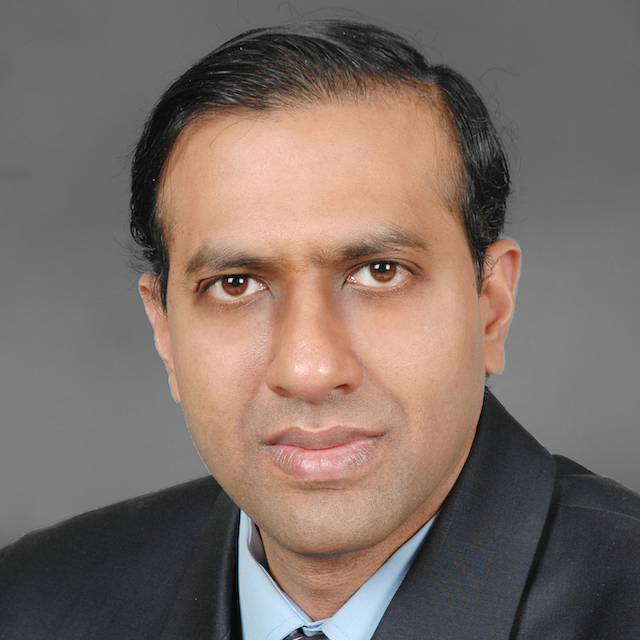
“In 2022, artificial intelligence will continue to evolve, becoming more transformative and intuitive than it has ever been.”
“More specifically, we will see breakthroughs in a few key areas: The Meteoric Rise of Conversational AI and Better Language Modeling.”
“From human resources to marketing, Conversational AI technologies are engineered to make life easier. Conversational AI can and will take over mundane, day-to-day internal and customer service tasks, freeing up live agents to deal with more pressing matters.”
“Conversational AI, like that created by Aisera, is designed to operate in lockstep with employees, establishing an integrated, more efficient, faster customer service experience.”
“Natural Language Processing will continue to evolve, understanding speech rhythms, along with all of our human, idiosyncratic speech patterns, uhms, ahs and words with mixed meanings. It will continue to learn which ones apply, making it much more reflective of human speech and much more able to direct queries and resolve concerns.”
“NLP/NLU technology is advancing quickly. Aisera’s solutions, for example, understand over five billion intents and one trillion phrases across 74 languages. These types of advancements will become essential to a company’s expansion, like hiring, testing, training, and customer service operations are an expensive part of operational growth.”
“In 2022, Conversational AI will begin to emerge in a variety of verticals that will help us all do our jobs more efficiently, and it will become more and more a part of our everyday working lives.”
For any questions, comments or features, please contact us directly.

Daniel Cecalacean, Senior Manager of Product & Strategy at Opengear
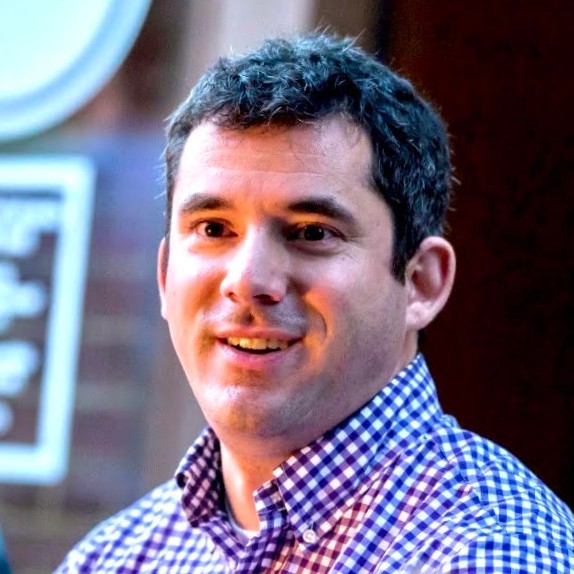
“The rise of edge computing is coming quickly as workload location becomes a priority for large enterprises. Processing is mainly taking place in a central location of the public cloud. Thus, organisations are looking for a way to decrease latency for newly developed applications, focusing on new innovations made possible through edge computing. Even in its early phases of development, the edge is already seeing aggressive competition for networks to provide content and application delivery providers with near real-time capabilities. To deliver these services, larger organisations will look to partner with network and cloud providers that deliver locations that offer computing close to the end user.”
“Although not an all-or-nothing proposition, industry leaders are focusing on how the network is facing its greatest transformation yet. Keywords such as IBN (Intent Based Networking), AI in Network Automation and the partnership between humans and machines are very common. IT organisations are struggling to manage network complexity, respond to disruptions, protect users and data and keep up with the accelerating pace of business. Many are investigating new networking models such as NaaS (Network as a Service). NaaS provides continuous access to the latest networking technologies through an on-demand or subscription-based model. It shifts the burden of day-to-day network management to a third-party provider. In doing so, it allows IT teams to focus on value-added activities that deliver greater agility, resiliency and innovation.”
Jaime Bosch, CEO of Voicemod

1. “In 2022, the demand for real-time voice augmentation capabilities will grow exponentially as our digital selves evolve in the metaverse, the market expands, and competition increases. The restrictions of physical reality will have no bearing on how we look or sound. Your digital avatar(s) will become whatever you wish to convey. It may be a realistic you in digital, name-brand fashion, or you as a purple dragon with a cowboy hat. And while It’s easy to visualise what our avatars might look like, what will they sound like? Surely, you won’t want your cowboy-hat-wearing dragon to sound identical to your everyday human self. As a result, major platform and game developers will be scrambling to have audio catch up with visual technology and will begin building voice modification capabilities into their platforms to produce fantasy and natural-sounding voices on demand, in real time.”
2. “The interest in unique sonic identities rising in 2022 will create an opportunity for companies that provide digital avatars to monetise voice skins. Because audio technology increases user engagement, companies can generate new avenues for monetisation within various verticals by offering high-quality, real-time, voice avatars. Whether you are a major corporate brand creating digital influencer personas in the metaverse, an employee suffering from online meeting fatigue, an up-and-coming VTuber, or merely an enthusiastic social gamer, the immersive digital experience is incomplete without the ability to personalise real-time audio. Advancements in audio technology will make it easy for anyone to create a sonic identity unique to themselves or their company.”
For any questions, comments or features, please contact us directly.

Harald Remmert, CTO for Cellular Solutions at Digi

3G Networks will eventually sunset throughout the year 2022: “LTE will be the dominant technology and 5G will see significant growth, adoption, and use.”
The 5G ecosystem will continue its evolution at an increasingly fast pace: “The 3GPP Release 17, will be released and the release 18 content, will be defined for the 2024 release. There will be an increase in 5G SA and network slicing on live networks and 5G devices that currently span beyond phones and routers will be readily available. Finally, we will see diversification in 5G chipsets with lower-cost options as well as more capable chipsets from vendors other than Qualcomm increase in availability.”
Supply chain challenges will slow down IoT projects: “There will be more companies that will look at nearshoring and in-country production to have more control over the supply chain. That being said, I still believe that the shipment gridlock will continue well into 2022.”
Digital Transformation & Automation have and will continue to occur at an increasing pace: “Driven by Covid, companies are looking for remote asset access, more control, and more detailed insights. Government incentives like the Infrastructure bill will fuel IoT investment and Digital Transformation.”
“Most importantly, easy to deploy, easy to monitor, and easy to use solutions, will be key to driving Digital transformation for Smart Cities, Smart Transit, Agriculture, and a high number of additionally popular verticals.”
Security will also be a top priority for CIOs in 2022: “Driven by the distributed work-from-home workforce, remote assets (previously or newly unmanned), and an ever-increasing number of bad actors and botnets.”
Vinay Nair, Founder and CEO of TIFIN
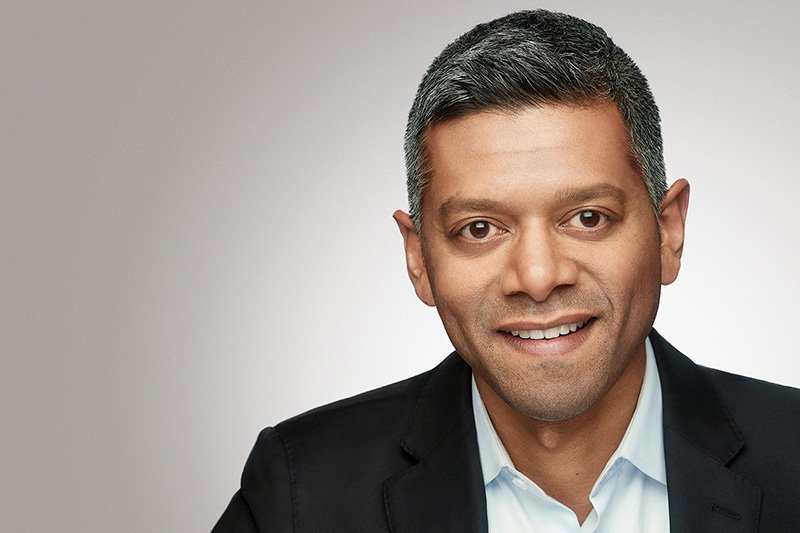
“As we begin 2022, I’m excited about seeing a greater adoption of AI-driven personalisation — we believe this can redefine the financial industry. Most of our digital experiences today from music, clothing and books, to entertainment and social media have become hyper-personalised. One important missing area is that key financial assets are sometimes managed with a one size fits all approach and often with a limited understanding of who we are as investors and the individual needs of each person’s financial life. Firms must remember, each of us is unique in our own specific situation and timeline.”
“To solve this, forward-thinking advisory and wealth firms are looking to fintech platforms that can address personalisation at scale with improved engagements and outcomes for their clients and themselves.”
“TIFIN is a fintech platform creating positive wealth experiences to better financial lives. We do this through AI and investment intelligence powered personalisation. We use design and behavioural thinking to enable engaging experiences through software and application programming interfaces (APIs). Using investment science and intelligence, we build algorithmic engines inside the software and APIs to enable better investor engagement and outcomes.”
For any questions, comments or features, please contact us directly.

Nabila Salem, President of Revolent Group

“2022 will be the year of adapting to and overcoming the tech skills gap, through hybrid working models. As the rise of hybrid working continues, the best companies will utilise this newfound access to a broader talent pool to plug core skills gaps in their organisations, as they take on skilled employees from anywhere around the world – who can work from home. I hope that, as we go into 2022, more businesses will see the potential of hybrid working, particularly in solving skills gaps and pushing core tech projects forward.”
Anya Boutov, Chief Revenue Officer for Beacon Platform

“The key word for the tech sector over the past two years has been flexibility—companies have had to pivot in response to rapidly changing circumstances. Going into 2022, I expect we’ll see an acceleration of that trend.”
“Many companies have been forced into a decision between buying their technology platform or building it themselves—especially companies in the finance and insurance sectors, but they will increasingly begin to demand the best of both worlds. We expect to see more tech vendors acknowledging the fact that they are part of a broad ecosystem of solutions and increasing the ways they provide greater choice to their customers. This means embracing the cloud, publishing APIs, enabling data exchanges, incorporating app store models, and even providing transparent source licences. Customers who were previously confined by black box or one-size-fits-most solutions will want the flexibility to buy vendor products for their foundational infrastructure needs and build their own intellectual property, thereby increasing their return on R&D investments.”
“In our view, one of the biggest forces shaping technology in 2022 will come from developers and business working together, with a greater emphasis on more flexible and customisable solutions. Leading developers will continue to enhance the ways they plan, build, and release code, giving their firms greater agility. Business users will capitalise on these capabilities by expanding their proprietary features and competitive advantage.”
“We believe this as an evolutionary change towards a new, more tailored technology platform that substantially boosts productivity, flexibility, and performance. Companies will spend much less time and fewer resources on infrastructure and standard components, boosting the quality and security of their technology foundations. Increased developer capacity, combined with the flexibility of customising source code, will enable firms to more fluidly integrate technology into their products and processes. The net result will see leading companies move quickly into the future of their markets, strengthening customer relationships and capturing new opportunities.”
For any questions, comments or features, please contact us directly.

Isabella Schmitt, Director of Regulatory Affairs at Proxima Clinical Research

“Artificial intelligence (AI) is poised to be a significant gamechanger in how we provide and receive healthcare. From wearables that can detect irregular heart rhythms to selfies that can detect certain eye conditions or dermatologic diseases, artificial intelligence has begun making its way into the MedTech development space. In the ICU, patients can be assessed for their risk of sepsis. Blood pressure monitors may be able to detect whether a patient is at risk for a crash. And, cancer patients may be matched with the most appropriate clinical trials.”
“How does artificial intelligence perform these activities? Machine learning algorithms are trained on large datasets, and once trained, they try to infer relationships within new data that they receive. With algorithms, we often know the input and see the output but what happens in between is a mystery. This may give us some pause when considering something as critical as patient care, but when developed correctly, AI devices may provide higher efficiency and better outcomes.”
“Several regulatory agencies have come together to establish practices based on those that have already been established in other sectors. Key in these practices is that the training and validation datasets must be generalisable to the patient population, and they must be disparate datasets. Additionally, the use case for the AI and its integration into the clinical workflow must be well understood to determine if the algorithm is being trained on the right material and that the output is appropriate to the clinical situation. And, because there is a lack of transparency as to how the algorithm drew its conclusion, the user must have access to essential information, such as acceptable inputs and known limitations.”
“While AI and its appropriate regulatory controls are still evolving, smart technologies are here to stay, and we can expect to see more our medical devices incorporating artificial intelligence in the days to come.”
Maria Palombini, IEEE SA Healthcare and Life Sciences Practice Lead

“In healthcare, we are seeing expanded Remote Patient Monitoring (RCM) solutions and adoption for real-time monitoring, better diagnosis, and therapeutic delivery. The pandemic may have accelerated this growth; however, we were already approaching a critical need for additional patient care options, largely due to people living longer.”
“Healthcare tech is increasingly leveraging AI in connected medical technologies for cybersecurity. As cyberattacks grow in volume and complexity, AI can help stay ahead of threats, as well as respond to incidents like data breaches quickly. By analysing threat intelligence from data sets and even news stories, AI can help organisations identify likely threats or vulnerabilities in their data storage and management practices before they occur or shortly after.”
For any questions, comments or features, please contact us directly.

Dr. Hermann Brand, IEEE SA Mobility Practice Lead

“In the mobility sector, a rise of new initiatives for green transformation of transportation is further pushing for future cars to have electric and other powertrains. Focus is on new infrastructures such as charging networks and hydrogen distribution networks that need to be developed and widely deployed.”
“In the mobility sector, the shift from individually-owned vehicles toward Mobility as a Service (MaaS) has increased. Younger generations are trading in their vehicles for city bikes, scooters, and rideshare options, spurring widespread adoption of rideshare apps.”
Purva Rajkotia, Director, IEEE SA Global Business Strategic Initiatives (GBSI) and Connectivity and Telecom Practice Lead
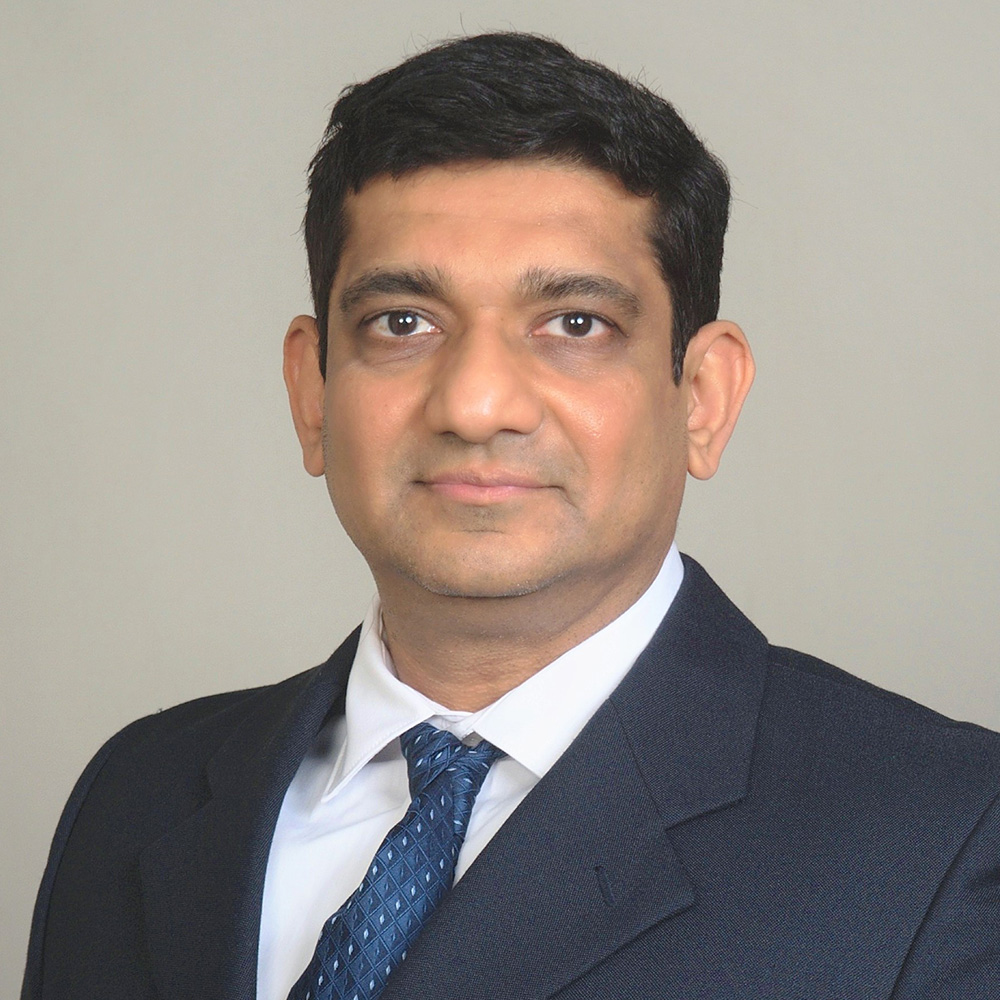
“In telecom, an expected rapid acceleration of AI and machine learning technologies will continue, particularly as providers strive to accelerate the deployment of 5G networks. However, the massive increase in data presents the need for more efficient means to leverage data to expand automation and AI/ML offerings while also mitigating cyber security threats.”
“In the telecom sector, the imperative for deployment of 5G networks, particularly in rural areas, will influence the advance open source initiatives. Open source is accelerating innovation and has also provided opportunities for dynamic new collaborations that can further advance and improve technology.”
For any questions, comments or features, please contact us directly.

Anthony Welgemoed, CEO of Ziflow

“I believe that creative collaboration capabilities will be a top priority in 2022 for executives that oversee disparate teams. Across industries, businesses are increasingly visual in how they communicate their brands and the customer experience lives online. According to Forbes, 82% of all internet traffic will be from video-driven content by the end of this year. There are so many options on market now that put content creation at the fingertips of not only designers, but also business people without design experience to create all the content needed for social, websites, print, video and more.”
“Yet, even in the era of remote work, 80% of business are still using email to collaborate on all these forms of content. The internal creative collaboration process hasn’t quite caught up to the sophistication and scale of the creative production and martech systems available to businesses today. As such, I believe we’ll an emergence of remote teams using SaaS tools for creative tech in 2022. Remote teams will gravitate to platforms that bring their design, video, web, and all other formats under one roof, integrate with creative production systems and offer better quality control and structure over how brand and company content is produced.”
Andrew Yu, ModoLabs

“The workplace is wherever your employees are and technology that supports the hybrid workplace will be in high demand. Employees are searching for a personalised digital experience that allows them to be productive and to collaborate anywhere they happen to be. They need to be able to reserve desk space, parking, meals, and conference rooms. They need to be able to see their colleagues’ schedules so they can quickly set up hybrid meetings. In 2022, we are going to see these capabilities and more consolidate into a mobile, digital workplace experience that is far more than just an app. Additional capabilities include integration of enterprise systems, health and wellness resources like health attestations. Through geofencing, touchless entry and localised density alerts, employees will have greater confidence in being safe.”
For any questions, comments or features, please contact us directly.

David Hennell, Business Development Director of National Broadband

“5G has been heralded as the next game changer for improved digital connectivity and with its continued roll-out and increasing coverage across the UK and the globe, more and more of us will be able to experience its benefits in 2022. As remote working continues to be the norm, dramatically improved internet speeds, reduced latency and the ability to connect more devices are obvious and immediate benefits.”
“However, 5G in 2022 can have the most transformative impact on digital connectivity in rural communities. The roll-out of fibre in the UK has made significant strides, but still struggles to overcome the physical and financial barriers to laying down fibre in more remote locations. 5G has major inherent advantages to fibre in reaching these areas and this is particularly the case with low-band 5G.”
“The type of 5G that has primarily been deployed so far is mid-band 5G. However, governments are increasingly granting the use of low-band frequencies to operators. 5G transmitted at these lower frequencies can travel greater distances, albeit at less dizzying speeds – but can provide significantly increased connection performance across rural areas.”
“This improved digital connectivity can provide a foundation of economic growth and tech innovation in rural areas. The distribution of advancements in technology has all too often been uneven, leaving too many behind and on the wrong side of the digital divide. For example, in the UK there are still around 600,000 properties with speeds of 10mbps or less. Such speeds are economically and socially debilitating and create significant barriers to playing a part in modern society.”
“If we are to realise the full benefits of advancements in tech, these must be made be available to all, no matter where one may live or work. The expansion of 5G will bring us closer to that in 2022.”
Simon Smith Wright, CEO and Founder of Push Live

“Technology is taking live streaming and influencer marketing to a new level in 2022. Historically brands, musicians and creatives have shared their message via their own social channels. However, in 2022 this “one to many” approach can become “many to mass”. Each of these individuals and companies has a multitude of fans and micro-influencers who have true affinity with them, and these fans create opportunity. It is time to use technology to really engage with these fans and to let them in. Let them tell the story.”
“One way of doing this is through switching from simply “live streaming” to curating “live moments”. A live moment is where each of these fans and micro-influencers launches the livestream at the same time, however crucially it isn’t live but has been curated, edited and personalised. The fans can choose what content they want to show to their friends and followers and on which of their channels.”
“The technology also builds on the increasing prevalence of digital and hybrid events. Covid19 pushed rightsholders, musicians, artists and creators online as they streamed to millions of homes. Live streaming, often with immersive VR and AR experiences, enables creatives and brands to communicate in a whole new way and create a truly immersive experience. It’s not replacing the old but simply adding to the new.”
“What’s more, as conversation turns to the metaverse, brands and artists will need to reach their fans wherever they may be. They’ll need to stream not only to web 2.0 destinations such as Instagram, Twitch and Facebook but increasingly multiple channels in the metaverse. As we look to the future it becomes clear that an ability to distribute personalised content to many audiences simultaneously will be the way to thrive in both Web 2.0 and Web 3.0.”
For any questions, comments or features, please contact us directly.

Dr Alex Connock, Head of the Creative Business MA at the National Film & Television School

“It’s a dangerous world out there. But let’s say the UK, sixth largest military in the world, were to gamble, and mothball its two aircraft carriers, four nuclear-strike submarines, surface ships and tanks, then make the whole army redundant, and confine the air force to base.”
“Fully focussed on entertainment, the now entirely-undefended nation would have saved enough cash to fund just half of what the top 8 US media groups alone are shelling out this year on making TV. That’s how globally significant the content production industry has become in 2022.”
Not the Last of the Big Spenders: “The major players in streaming have the momentum of hypersonic missiles. Netflix is spending a remarkable $17 billion on programming this year, nearly double two years ago, and such has been its global subscriber growth (America has flatlined) that it still expects to break even or better. Disney is spending $33 billion, including its sports investments, after stellar subscriber growth on launch (and to get beyond its core audience.)”
“To deliver that tsunami of content is an industry that is maxed out on every level in the UK. Studios like Pinewood and Shepperton, virtual studio sets (being used for everything from Game of Thrones follow ups to The Mandalorian), major actors, production managers, editors, special effects – you name it, they’re in demand, and their prices are rising. For thousands of workers, it’s a career-adrenalising moment. But there is an even bigger beast on the horizon.”
See you in The Metaverse: “The notion of an always-on virtual world has gone from something geeks talked about in obscure Reddit forums, to mainstream. It was the dominant topic at this year’s Consumer Electronics Show in Las Vegas. It’s a transcendent new technology which is set to revolutionise video games, cinema, TV, social media, audio, live events and almost all other facets of social and business interaction. It’s big enough for Facebook to have renamed the $912 billion company for it (to Meta Networks).”
“The only small problem is that almost none of it works – yet. We don’t have a seamless interface. We haven’t solved the inherent philosophical problems. At a virtual meeting where one person has blocked another, who sees who? Will the rival Metaverses of (say) Roblox and Facebook inter-operate seamlessly?”
“And above all, we don’t really have any wearable mass-market headset technology. Even the Oculus 2 is clunky kit without the mass-market appeal of an iPhone. Apple are reportedly bringing out augmented-reality ski goggles this Summer: perhaps that will be a breakthrough moment. Succeed or fail: 2022 will be a big year for the Metaverse.”
Ronny Golan, CEO and Co-Founder of ViewersLogic

“There has been a realisation this year that many attribution models based on last click/spot haven’t hit the mark. Google scrapped its focus on this framework while marketers continued to grapple with major flaws present within the five-minute TV measurement model – namely, its inability to allow assessment of the long-term impact of an ad. Research tells us that audiences complete the call to action hours if not days after exposure to a TV ad, due to higher resonance and recall. In addition, a multimedia world presents further complexities for marketers who need to understand the cross-media effect of their advertising, as well as connect their efforts to an action that happens on a different medium or even offline.”
“A better view of the entire pathway to purchase and the touch points needed to achieve this will be vital for accurate attribution in 2022. This is where deterministic models, enabled by single source data, will come into its own, allowing marketers to gain access to crucial customer behavioural insights and take the necessary steps towards successful campaign optimisation.”
For any questions, comments or features, please contact us directly.

Suzy Ley, EMEA Marketing Lead at Zefr

“This year saw brands spending bigger and smarter on digital video – with display enjoying a 70% year-over-year hike in H1. As a result, many started applying brand safety lessons learned in 2020 to ensure valuable content adjacencies weren’t being lost; shifting away from keyword blocking towards nuanced brand suitability. This move was made possible by AI tools able to assess content against standardised definitions, set by trusted bodies such as The Global Alliance of Responsible Media (GARM), at speed and scale.”
“With GARM creating an open source of definitions for technology vendors to build on, partnering brands can track the impact of their campaigns and increase their effectiveness moving forward. This also allows marketers to have one view of the quality of their video inventory, rather than different suitability definitions for each channel skewing results.”
“Through 2022, the industry must sustain this quality drive, encouraging brands to adopt technologies that offer higher transparency about where their ad budgets are going. Prioritising access to deep contextual data will not only give them better assurance of appropriate placements, but also enhance trust among target audiences with consistently suitable and effective ads.”
Paul Carreo, Director of EMEA Growth at VidMob

“Creative departments have typically relied on a series of relatively static insights and creative intuition that rarely connect to performance; past campaign performance, prior brand requirements, and qualitative research are less relevant and slow companies down. Brands that have managed to become more flexible and make bolder, quicker, creative decisions will continue to see their results improve in 2022.”
“As more automation and contextual targeting is brought about by loss of signal identifiers and cookie deprecation, this will make campaign audiences broader, and the fight for people’s attention and actions will be harder. Media performance reports may indicate which ad in its entirety worked better, but teams are left to guess why. Partly to stand out from the crowd and partly due to the drop in digital campaign performance triggered by data privacy decisions, we will see traditional media agencies looking to ramp up their understanding of advertising creative with the help of AI technology. If you don’t have “machine eyes” on the problem, you will be falling behind your competitors.”
For any questions, comments or features, please contact us directly.

Phil Acton, Country Manager, UK and BeNeFrance at Adform

“Video power remains strong. A main driver of ad spend before pandemic disruption, it is now one of the key forces behind recovery — sending global investment soaring by 11%, as well as becoming the fastest-growing digital channel. Through 2022 that momentum will continue but gain further acceleration from enhanced development beyond walled garden borders and the rise of connected TV (CTV).”
“Bringing premium standards from traditional TV to programmatic, CTV is an especially exciting innovation area. After a slow start, the recent explosion in audience adoption has pushed advertisers to increase automated trading at scale. No longer the next frontier of video, CTV is firmly established as a key opportunity all corners of the ecosystem should be harnessing.”
Gary Styles, Founder and CEO of Zellar

“In 2022 we will see an upsurge in tech being used to help people and businesses reduce their negative impact on the environment and work towards Net Zero.”
“At Zellar, we have developed software to help British businesses in this regard, via a one-stop online platform that contains all the information and guidance they need to become more sustainable. It’s also affordable and very easy to use. Across the world, businesses and consumers are crying out for simple solutions like this to help them be greener – because we all want to do better when it comes to the environment, but it often feels overwhelming to know where to start and to understand which steps will have the most impact. Easy-to-use websites and apps are one of the solutions to that. I’ve no doubt that in a few year’s time we’ll all be tracking our green credentials on our phones, and I think 2022 is the year that we’ll start to see these type of tech solutions enter the mainstream.”
For any questions, comments or features, please contact us directly.



